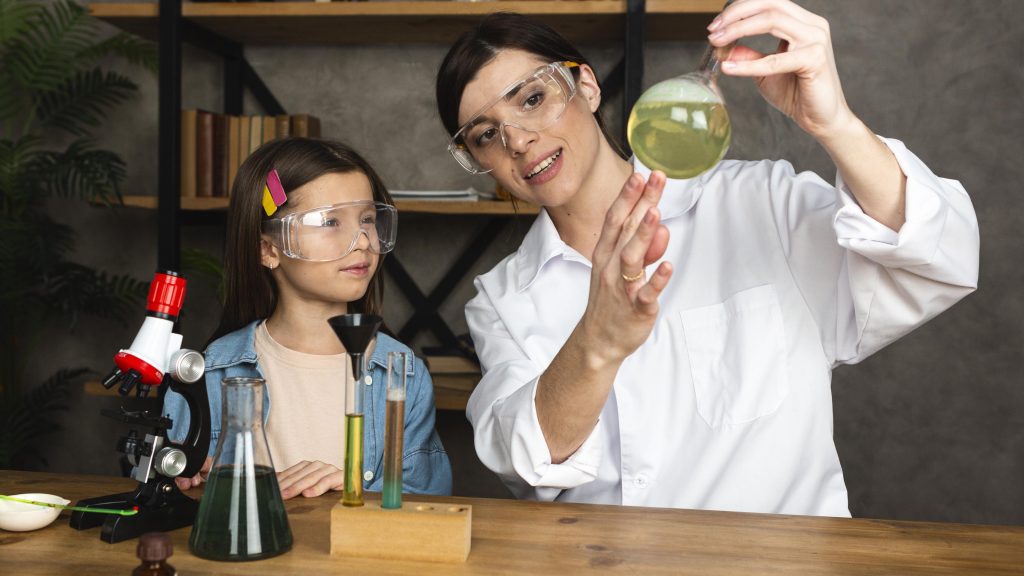The recent surge in at-home innovation has led to the rise of a new movement: the new age of DIY science experiments at home. Whether you’re a parent, student, teacher, or science enthusiast, conducting science experiments in your kitchen or garage is no longer just a school project—it’s part of a global trend reshaping how people engage with science.
Driven by online learning, affordable tools, and a growing culture of curiosity, home-based science is rapidly becoming a mainstream educational practice.

Why DIY Science Is Gaining Momentum
Several factors are pushing the popularity of DIY science experiments at home:
- Remote learning growth: The pandemic highlighted gaps in traditional education, encouraging hands-on alternatives.
- STEM interest among youth: More students are exploring science, technology, engineering, and math outside the classroom.
- Accessible tools and kits: Affordable lab equipment and open-source tech are lowering the barrier to entry.
- Social media influence: Platforms like YouTube and TikTok are packed with easy science projects that anyone can replicate.
According to a 2022 report by the National Science Teaching Association (NSTA), informal science education—particularly at home—improves retention and enthusiasm more effectively than traditional lectures alone.
Tools That Are Making Science at Home Easier
This new age of experimentation isn’t just about baking soda volcanoes. Thanks to consumer-grade tools, experiments once reserved for classrooms or labs can now be done safely at home.
Some game-changing tools include:
- Pocket microscopes: Under $30 and attachable to smartphones.
- Arduino and Raspberry Pi kits: For coding, automation, and electronics experiments.
- pH testing strips and sensors: Used in chemistry and environmental science.
- 3D printers: Allow for creating custom components and engineering models.
- DNA extraction kits: Available from companies like Bio-Rad for biology-based experiments.
These tools allow learners to go beyond passive consumption and actually interact with scientific concepts in meaningful ways.
Popular DIY Science Experiments at Home
Looking for ideas to get started? Here are a few trending DIY science experiments that combine education with hands-on fun.
1. Extracting DNA from Fruit
- Supplies: Rubbing alcohol, dish soap, salt, water, ziplock bags, and a banana or strawberries.
- Learning area: Biology and genetics.
- Outcome: Teaches cell structure and DNA extraction basics.
2. Building a Homemade Weather Station
- Supplies: Thermometer, barometer, rain gauge, cardboard, glue.
- Learning area: Meteorology and environmental science.
- Outcome: Encourages daily observation and data logging.
3. Making a Simple Circuit with LEDs
- Supplies: Coin-cell battery, copper tape, LEDs, paper.
- Learning area: Physics and electronics.
- Outcome: Introduces current flow and circuit logic.
4. Growing Crystals
- Supplies: Borax, hot water, jars, string, pencils.
- Learning area: Chemistry.
- Outcome: Demonstrates supersaturation and crystal formation.
5. Simulating a Volcano
- Supplies: Baking soda, vinegar, dish soap, food coloring.
- Learning area: Geology and chemical reactions.
- Outcome: Teaches acid-base interaction and visual modelling.
Each experiment serves as an entry point into deeper scientific inquiry, especially when followed up with questions and reflection.
Educational Benefits of DIY Science at Home
Studies show that children and young adults who engage in regular science activities at home develop stronger problem-solving skills and a more lasting interest in STEM fields. The Smithsonian Science Education Center notes that active learning—where students investigate and test theories—produces better academic results.
Benefits include:
- Improved retention of scientific concepts
- Enhanced creativity and critical thinking
- Development of fine motor and observation skills
- Increased confidence through trial-and-error learning
Additionally, parents report improved family bonding when participating in science experiments together.
Online Platforms and Communities Supporting the Movement
The rise of DIY science experiments at home wouldn’t be possible without robust online ecosystems. These platforms provide tutorials, supply lists, troubleshooting support, and peer feedback.
Popular platforms include:
- Science Buddies (sciencebuddies.org): Offers free, searchable experiments by grade level and subject.
- Instructables (instructables.com): Features community-generated science projects with step-by-step instructions.
- Little Bins for Little Hands (littlebinsforlittlehands.com): Focuses on STEM for early learners.
- YouTube Channels: Mark Rober, Physics Girl, and The Dad Lab are all excellent resources.
These platforms allow learners to connect, troubleshoot, and share their experiments—adding a social learning layer that traditional textbooks often lack.
Safety First: Guidelines for Home-Based Science
With the accessibility of science tools comes responsibility. Safety should always be a priority.
Tips for safe home experiments:
- Always supervise children, especially with heat or chemicals.
- Use protective gear like gloves and goggles when required.
- Follow instructions exactly and never mix unknown substances.
- Clean up thoroughly and label materials clearly.
- Store chemicals and sharp tools safely after each experiment.
Many kits now come with QR codes linking to video instructions and safety overviews, making responsible experimentation easier than ever.
How Schools Are Adapting to the Trend
Forward-thinking schools are beginning to blend DIY science into their curricula. Some are:
- Offering hybrid learning modules that encourage experiments at home.
- Sending experiment kits to students as part of their homework.
- Hosting virtual science fairs that showcase student-led projects.
A 2023 report from the American Educational Research Association (AERA) found that schools implementing project-based home science saw a 27% increase in science test scores and engagement levels.
Final Thoughts
The new age of DIY science experiments at home represents more than just a trend—it’s a shift toward more active, accessible, and inclusive science education. With the right tools, platforms, and safety measures, anyone can explore complex scientific ideas from their own living room. Whether you’re looking to support a curious child, supplement your classroom teaching, or simply explore your own interests, this movement makes it possible to experience science as it was meant to be: engaging, interactive, and within reach.
References:
- National Science Teaching Association (2022). “Informal Science Learning.”
- Smithsonian Science Education Center. “The Benefits of Hands-On Learning.”
- American Educational Research Association (2023). “Project-Based Learning Outcomes.”









